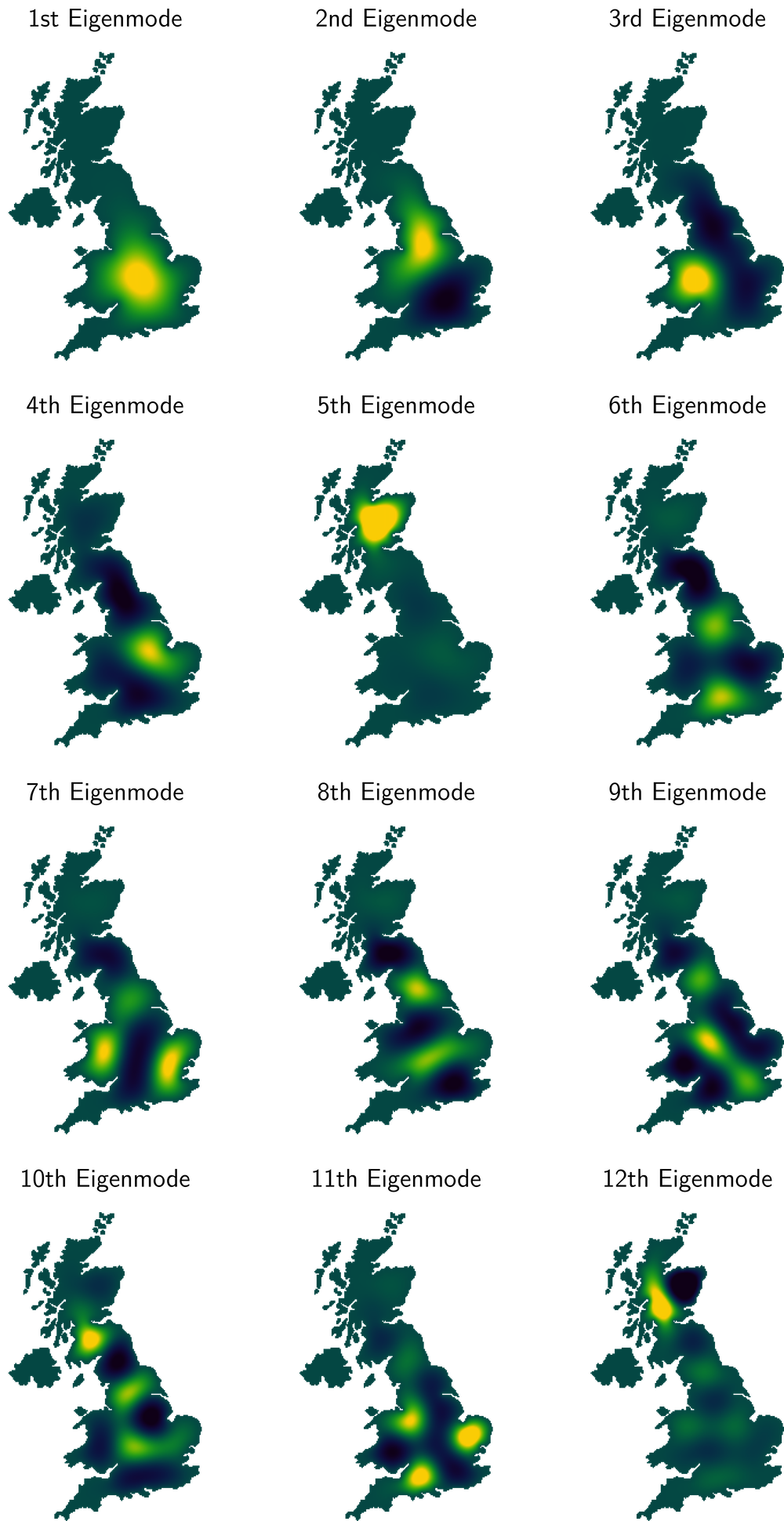Research
Computing Vibration Modes of Fractal Drums
Research article:
- Frank Rösler, Alexei Stepanenko; Computing Eigenvalues of the Laplacian on Rough Domains, Math. Comp. 93 (2024), 111-161. (supported by the European Union’s Horizon 2020 Research and Innovation Programme under the Marie Skłodowska-Curie grant agreement No 885904.) (A Matlab implementation of the algorithm is available here)
Overview:
In this recent research project my collaborator Alexei Stepanenko and I studied computational aspects of a classical problem in spectral theory: Computing the eigenmodes of the 2d surface of a drum. Those are given by the eigenfunctions and eigenvalues of the Laplace operator with zero boundary conditions:
$$\mathsf{-\Delta u = \lambda u \quad\text{on the drum }\mathcal{O},} \tag{1}$$
where $u$ models the vertical displacement of the drum’s membrane and $\lambda$ its frequency. If the shape of the drum is highly symmectric (e.g. circular), this problem can be solved explicitly. However, if the drum has a more complicated shape, the problem becomes very difficult and can in general only be solved numerically. In our research article we study a numerical procedure for solving precisely this problem. We demonstrate that even for drums whose boundary is a fractal (i.e. varies wildly on every length scale, no matter how small) the eigenmodes $\mathsf u$ and eigenfrequencies $\mathsf\lambda$ can be computed reliably. Our method relies on increasingly fine pixelations $\mathsf{\mathcal{O}_n}$ of the original drum, as in the next figure.

